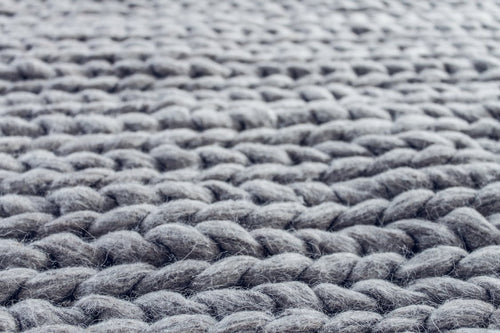At a Glance
Choosing the ideal bed sheets from the wide range available can be overwhelming. This reliable guide is designed to help simplify things for you.
Quick Tips
- Learn the different bedsheet materials' properties.
- Consider the care requirements before buying.
- Factor in the bedsheet colour and design.
Beds are intrinsic to being human. In most parts of the world, people start their day by getting out of bed and end it by returning to that same bed. The average person aims to sleep 8 out of 24 hours and thus, in a typical lifespan of 79 years, they should be sleeping for approximately 26 years.
Not only do we spend a great deal of time on it but it also accommodates the most crucial moments of our lives. From providing a respite for the sick, weak and tired, it also hosts numerous other activities. Despite the fact that we devote such a large fraction of our life to lying in our beds, many mysteries still remain about what makes a bed ideal for great sleep.
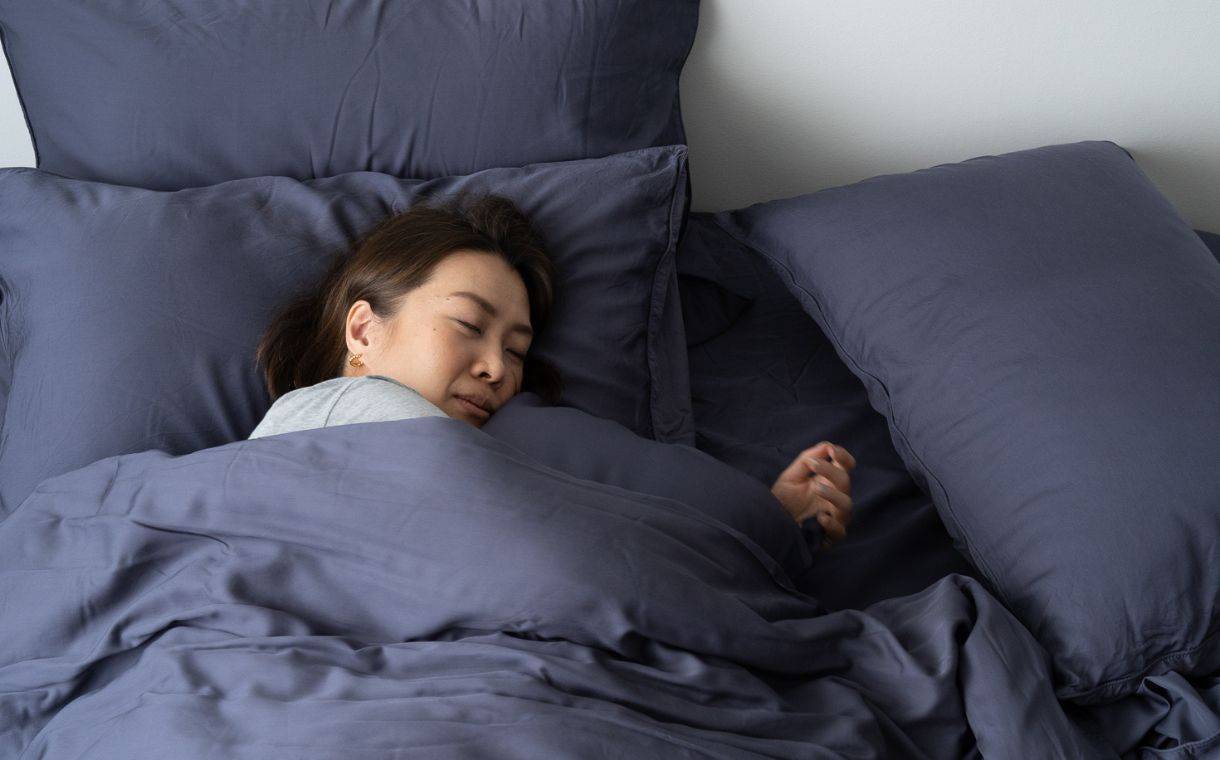
Featuring Weavve's Signature TENCEL™ Classic Set in Midnight Blue
With the extensive range of best bed sheets in Singapore, finding the perfect one for you can be confusing. We’ve put together a comprehensive buying bed sheet materials guide to help make the decision-making process easier.
Before moving on to the considerations, you’d need to think about how to choose bedsheets suitable to your needs and budget. Read on because this bed linen buying guide will dive deep into what you should know about them - from the materials, care requirements, cost, and everything in between!
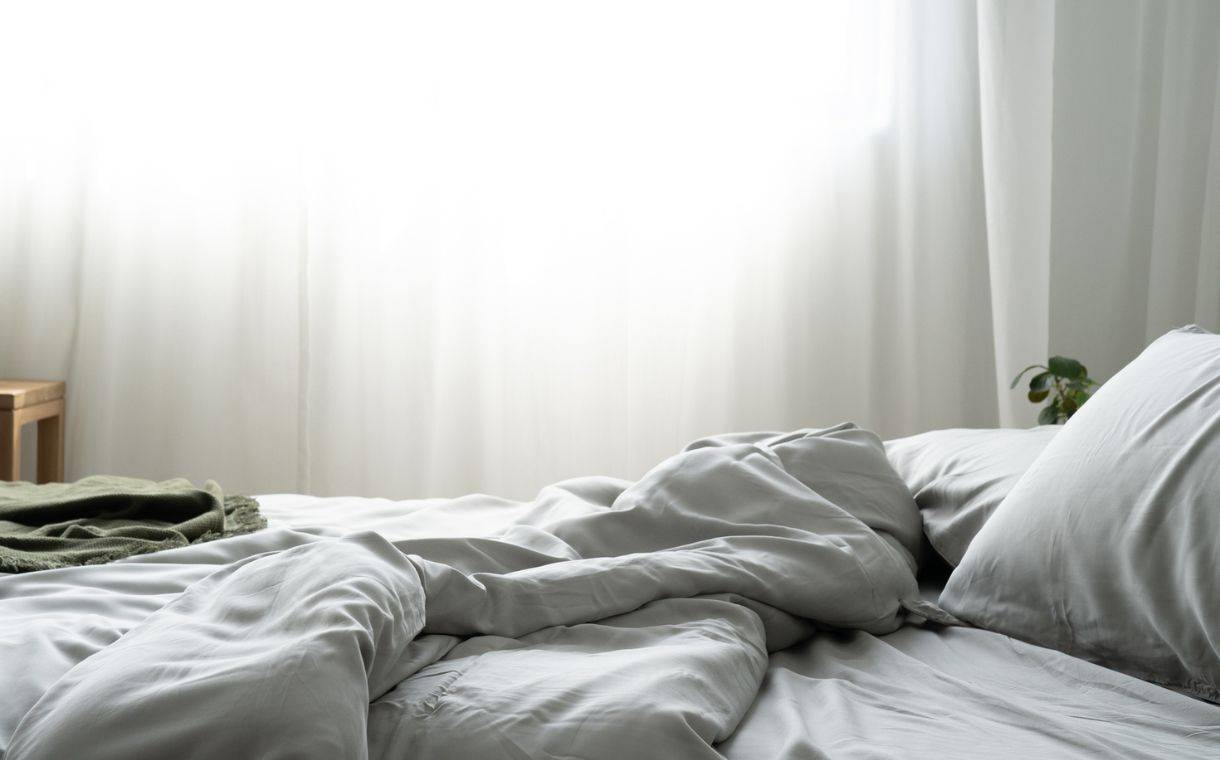
Featuring Weavve's Signature TENCEL™ Deluxe Set in Mist Grey
Table Of Contents
| Bedding Vs Bedlinen | Go To Section |
| What Are Bed Sheets? | Go To Section |
| Other Types Of Bedsheets: Duvet Covers & Pillow Cases | Go To Section |
| Buying Bed Sheet Materials Guide | Go To Section |
| How To Choose Bed Sheets: Factors Affecting Bed Linen Quality | Go To Section |
| How Long Do Bed Linen Sets Last? | Go To Section |
| Finding Toxic-Free & Safe Bedsheets | Go To Section |
| How To Choose Bedsheets: Must-Know Tips | Go To Section |
| Bed Linen Shopping: Price Range Comparison | Go To Section |
| Frequently Asked Questions: Bed Sheets | Go To Section |
Bedding vs Bedlinen
The definition of bedding and bedlinen have been interpreted differently across different cultures and even brands. In this article, we define them as:
Bedding: All products that make up the bed such as pillows, mattresses, blankets, and more.
Bedlinen: The textiles used to cover your bedding such as pillowcases, duvet covers, fitted sheets, flat bed sheets, and more. The term bedlinen can be used interchangeably with bedsheets.
|
Bedding |
Bed linen/ Bedsheets |
|
| Definition | All products that make up the bed | The covering and textiles used to make up the bed |
| Examples | Mattresses Pillows Duvet, quilt, or comforter |
Fitted sheets Flat sheets Pillowcases Duvet cover |
| Function | Make up the bed Provide comfort |
Protect bedding to maximise its lifespan Provides additional comfort Aesthetic purposes |
The main similarities between the two is that they both provide comfort for your overall bed.
What Are Bed Sheets?
The history of bed sheets dates back to 3000 BC when Kings of Egypt raised their beds from the floor and decorated their bed tops with rich, high-quality sheets. The Roman Empire also used different paintings, gold, silver, and bronze to decorate their mattresses.
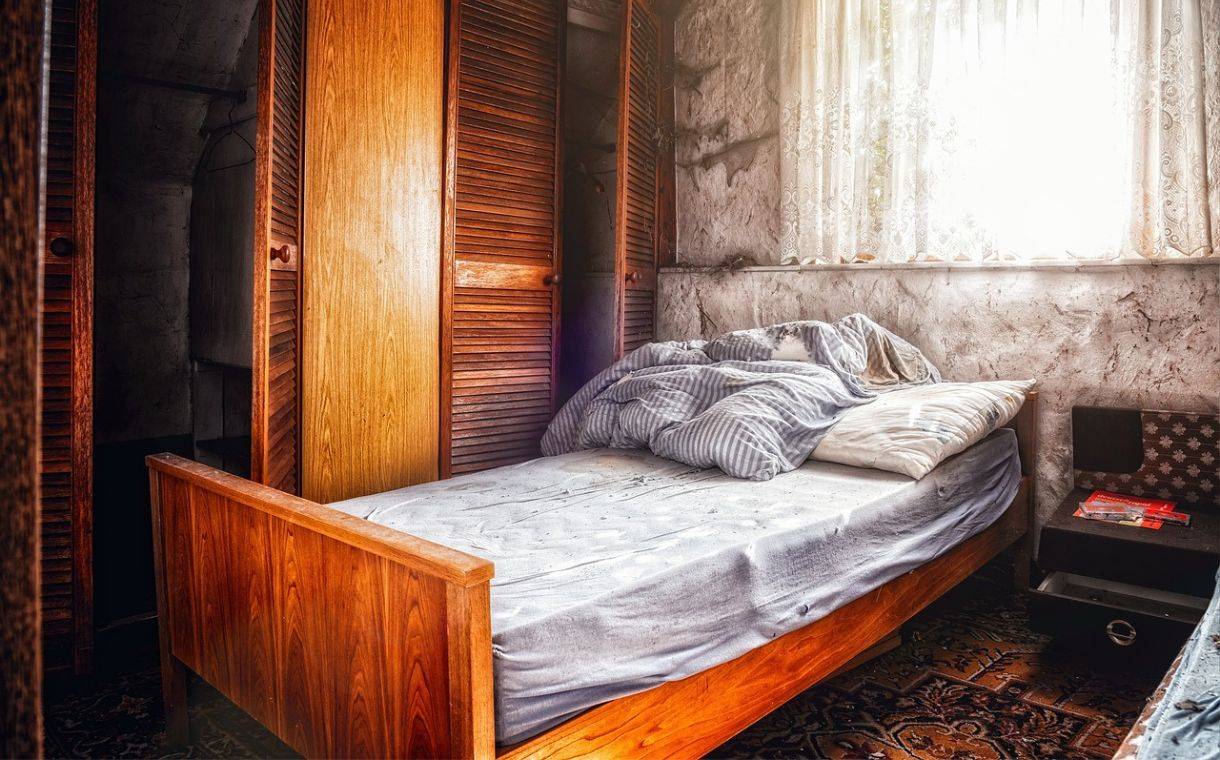
Image by Tama66 from Pixabay
Flat Bed Sheets |
Fitted Bed Sheets |
|
|
Main Purpose |
To keep users warm and protect the quality of cover |
To provide a comfortable layer to lay on and protect the quality of the mattress |
|
Short Description |
Also known as a top sheet, a flat sheet is one to lay under, after the fitted sheet and below the duvet. |
A fitted sheet set should securely fit a mattress. It has pockets at all four (4) corners that are tightened with elastic. |
|
Things to Note |
On warmer nights, a flat sheet can be used by itself instead of a duvet. However, with the rise of modern cooling duvets, some may feel that the importance of flat bed sheets has been diminished.
|
When it comes to selecting a pocketed sheet, pocket depth needs to be taken account for such that it fits the mattress comfortably and securely. |
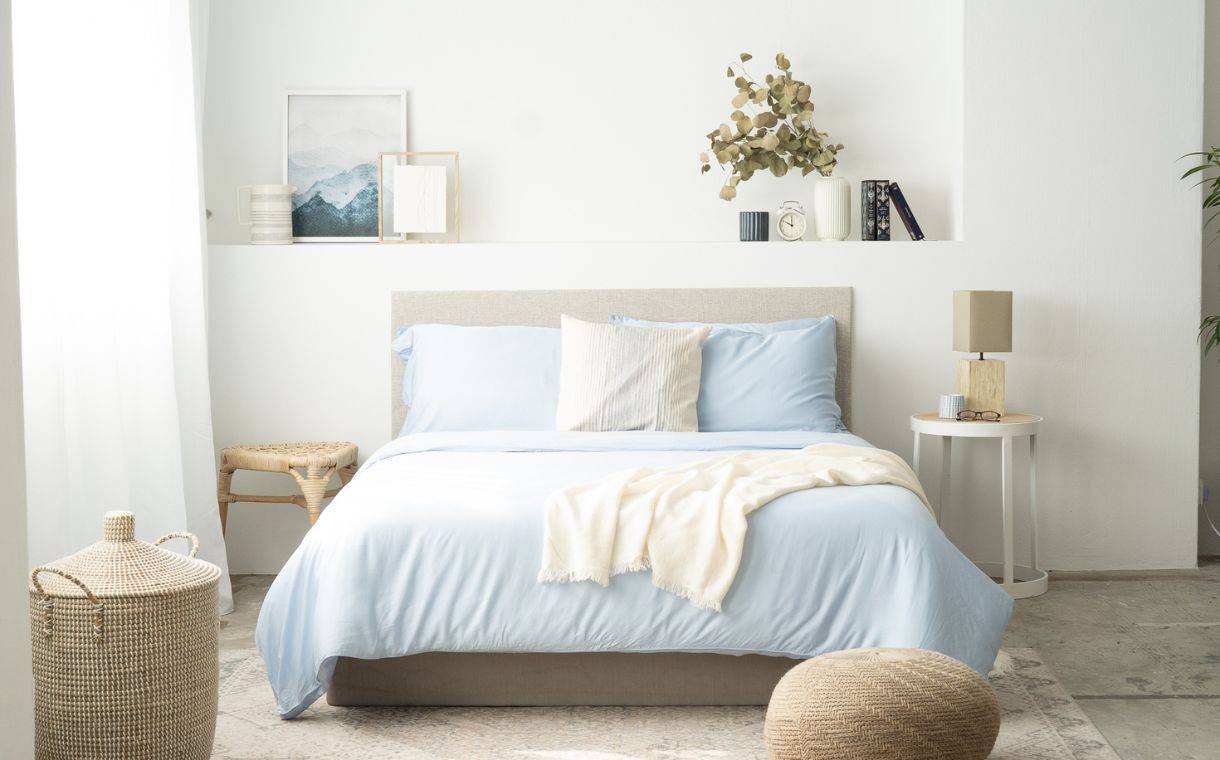
Featuring Weavve's Signature TENCEL™ Fitted Sheet Set In Sky Blue
Other Types of Bedsheets: Duvet Covers and Pillow Cases
As mentioned, ideal bedding sets need textiles or coverings other than bedsheets - not just for aesthetic purposes but for protection as well. Now, let's dive into the comparison between duvet covers and pillow cases.
|
Duvet Covers |
Pillow Cases |
|
|
Main Purpose |
Acts as a protective sleeve for the duvet or blanket |
Acts as a protective sleeve for pillows |
|
Short Description |
Ideally, duvet covers should slip over the insert with ease, making washing convenient as well. They also usually act as decorative pieces to bring personality to your bedroom. |
A pillow case could have an opening at the end, a slit, or no closure at all. It is also a simple yet effective way to beautify your bed. |
|
Things to Note |
Duvets, quilts, and comforters have often been coined as the same product with different names, but they are actually three separate beddings. |
Pillowcases and pillow shams are commonly mistaken for the same product. However, they differ slightly on purpose and style. A pillow case protects the cushion you use to mainly sleep on which is hidden underneath a pillow sham. Hence, the pillow sham tends to be a bit more decorative. |
Buying Bed Sheet Materials Guide
Now, let’s dive into the question: what are the best bed sheets to buy?
It goes without saying that the material of your bed sheet set plays a vital role in determining your comfort level as you lie in bed. Be sure to look into the characteristics of each fabric and the production methods behind it before you buy bed sheets.
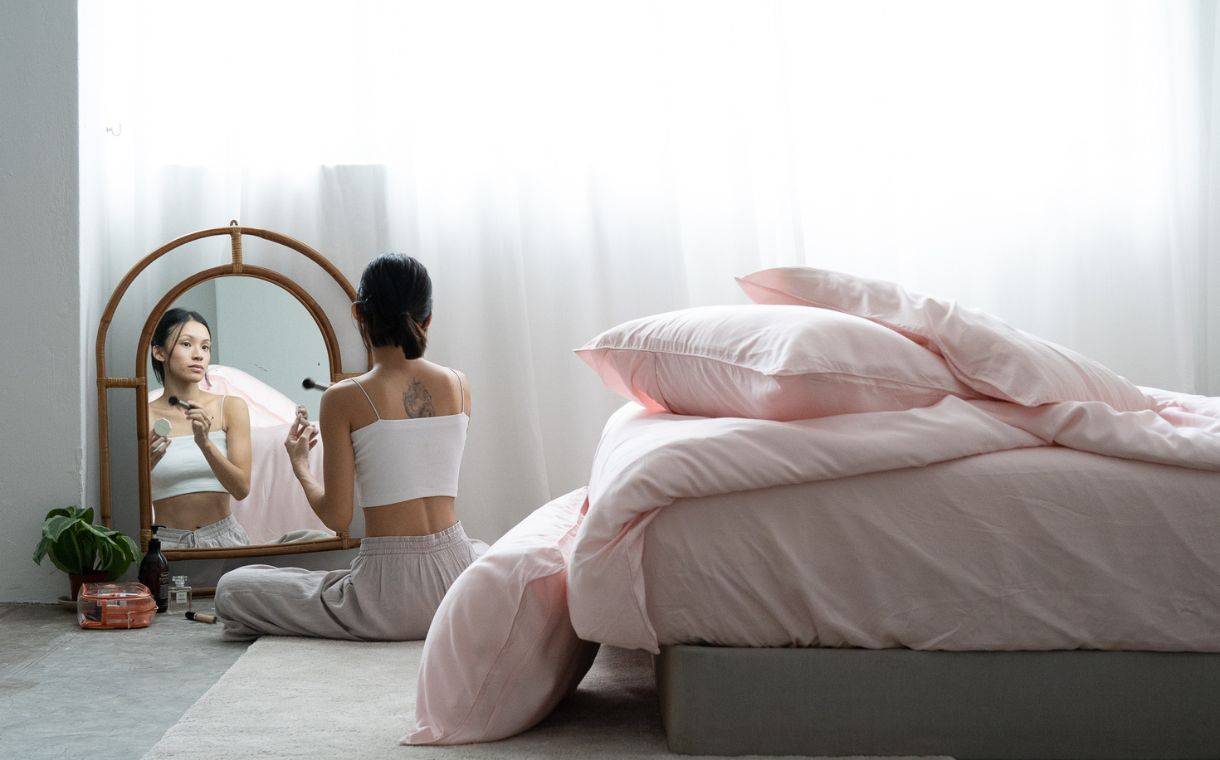
Featuring Weavve's Signature TENCEL™ Classic Set in Blush Pink
TENCEL™ Lyocell Bed Sheets
TENCEL™ is the brand name for semi-synthetic fibres like Modal and Lyocell. Produced by the Austrian textile business company Lenzing AG, these two materials that are frequently used in Singapore bedding and clothes. TENCEL™ bedlinen is especially loved for its silk-like smoothness, softness, and breathability.
Wood-based cellulose fibres make up the bulk of the market for Lenzing. They produce Viscose, Modal, and Lyocell. All of which are made from sustainable wood and pulp sustainably sourced from approved and regulated sources. Wood pulps are dissolved in a solvent to create this substance, which are then used to extrude fibres through tiny pores. Next, the manufacturers process and spun these produced fibres into yarn. TENCEL™ Lyocell is the best material for bed sheets if you're looking for top-notch and eco-friendly options.
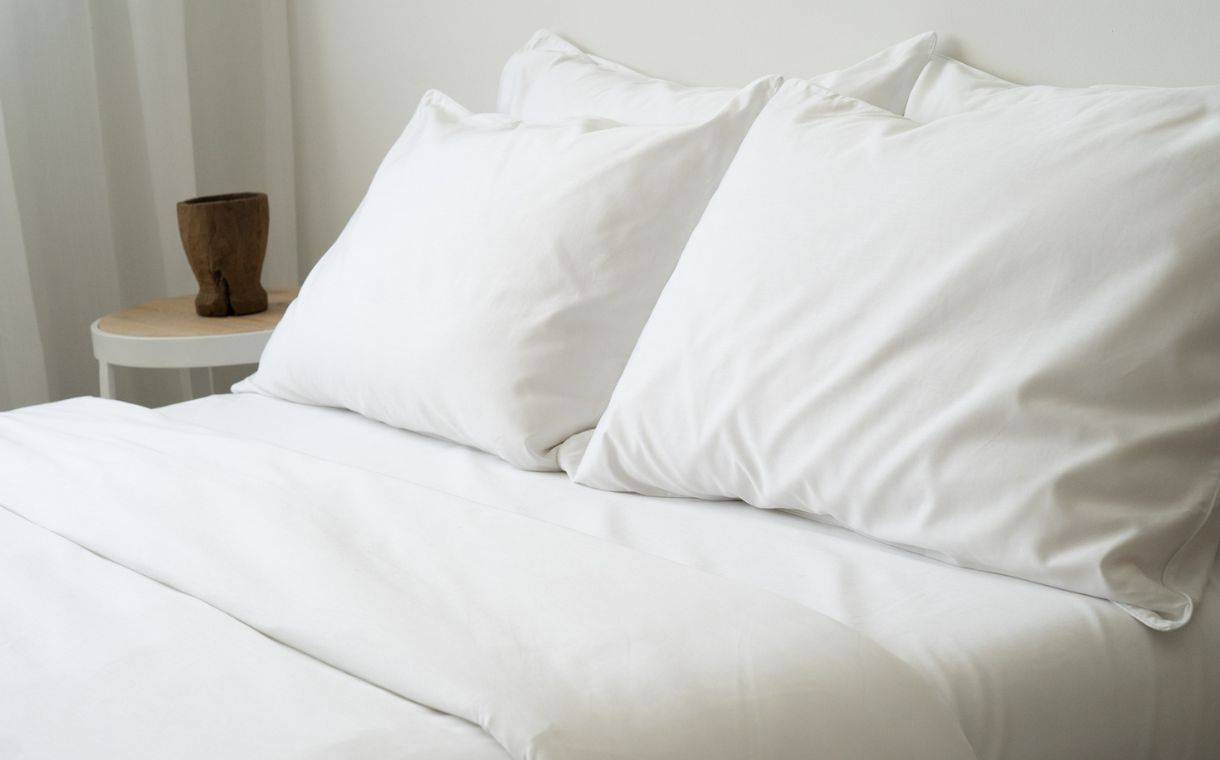
Featuring Weavve’s Signature TENCEL™ Classic Set in Cloud White
Cotton Bed Sheets
A natural fibre, cotton is harvested from the cotton seed pod of cotton plants. It's one of, if not the most, commonly used material. From using an ultra soft cotton towel to wipe our faces in the morning to donning our go-to cotton t-shirt to slipping into crisp cotton bed sheets at night, cotton fabrics always find their way to our households.
The seeds from the cotton boll and any dirt from the cotton are removed using a machine called a cotton gin in order to produce cotton fabric. The raw cotton fibres are then "carded," or made into long strands, from the process. Afterward, these lengthy strands are spun into yarn, subjected to a number of chemical processes, and coloured. Eventually, the threads are weaved into the textile material of choice, such as bed sheets or clothing.
It is important to note that not all cotton bed linen sets are made the same and their quality can be determined through various factors - thread count, ply, staple length, yarn count, and types of weave. We'll discuss these in detail later in the article.
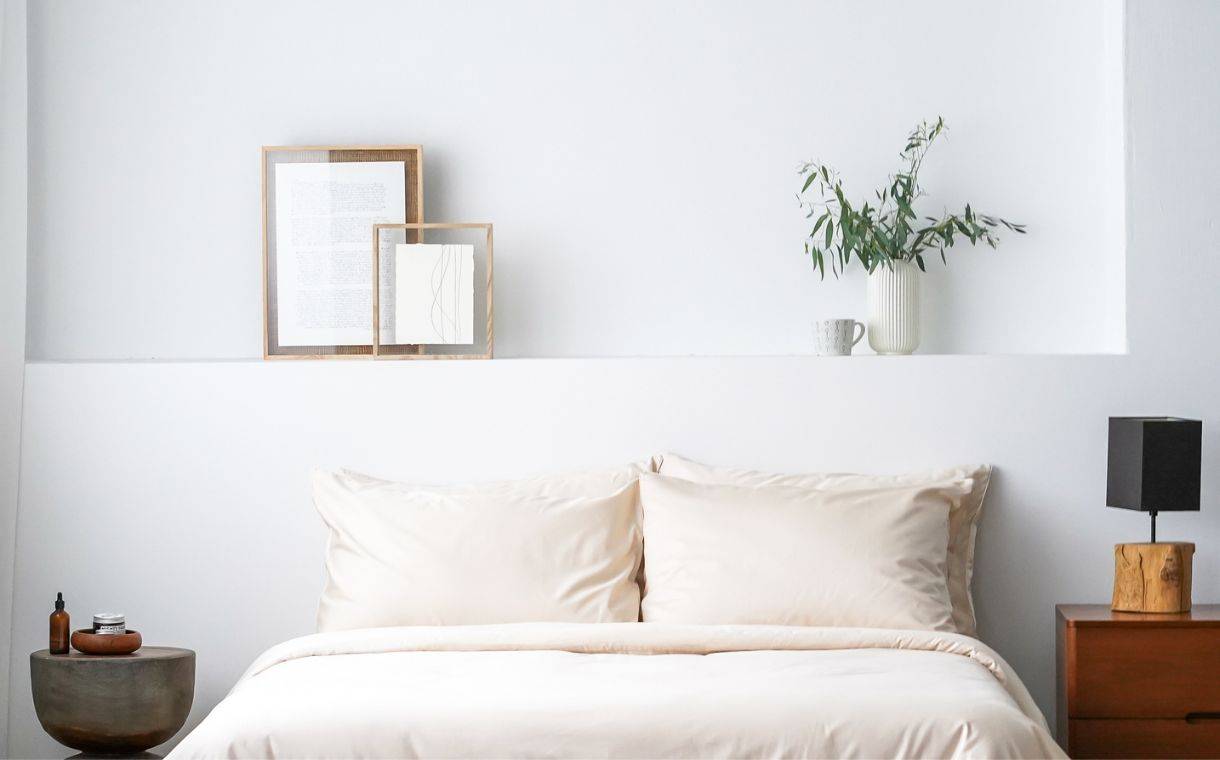
Featuring Weavve's Cotton Classic Set in Sandshell
Bamboo Bed Sheets
Plant-based textiles like bamboo sheets in Singapore have recently gained popularity as an eco-friendly alternative to traditional fabric. Bamboo grows abundantly like eucalyptus and this is why bamboo and TENCEL™ sheets are often compared with each other. Being a self-regenerating and quickly expanding plant, it is also natural to think that its fabric would be sustainable and ecologically benign.
Bamboo cloth can be produced either mechanically or chemically. For mechanical manufacturing, bamboo plants are manually crushed into mush. After being broken down using natural enzymes, the fibres are spun. Bamboo linen is another name for bamboo bed sheets produced mechanically.
However, out of the two processes, chemical processing of bamboo fabric is more common. Instead of employing natural enzymes to speed up manufacturing, harsh chemicals like sodium hydroxide and carbon disulfide are used. It clearly takes less time, but the harsh and poisonous chemicals have a detrimental effect on the ecosystem. So if you’re someone looking for safe bedsheets, choose mechanically produced bamboo bedlinen and other toxin-free options.
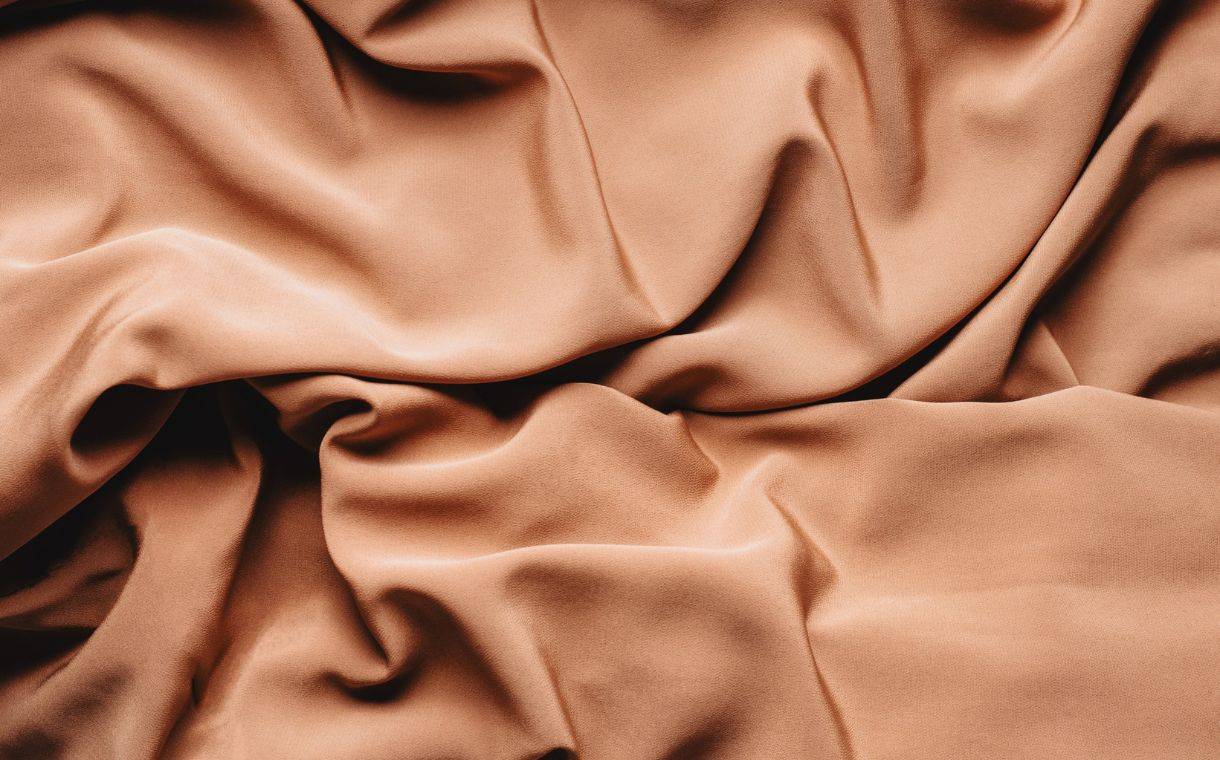
Image by Anete Lusina from Pexels
Linen Bed Sheets
Linen is an all-natural fibre made from the stalks of the flax plant. It is manufactured through an extensive process of harvesting the flax plant, drying it, and threshing it to remove the seeds. The threshed stalks are then dampened and undergo more processes to remove the woody bits from the flax fibre, then polishing and finally spun through a yarn.
This meticulous manufacturing process allows linen bed sheets to stand out compared to regular cotton sheets in terms of durability. They are also naturally hypoallergenic and breathable, making them great options for those with sensitive skin. Belgian linen, in particular, is thought to be among the highest quality types of linen and is often used in making luxury bed sheets.
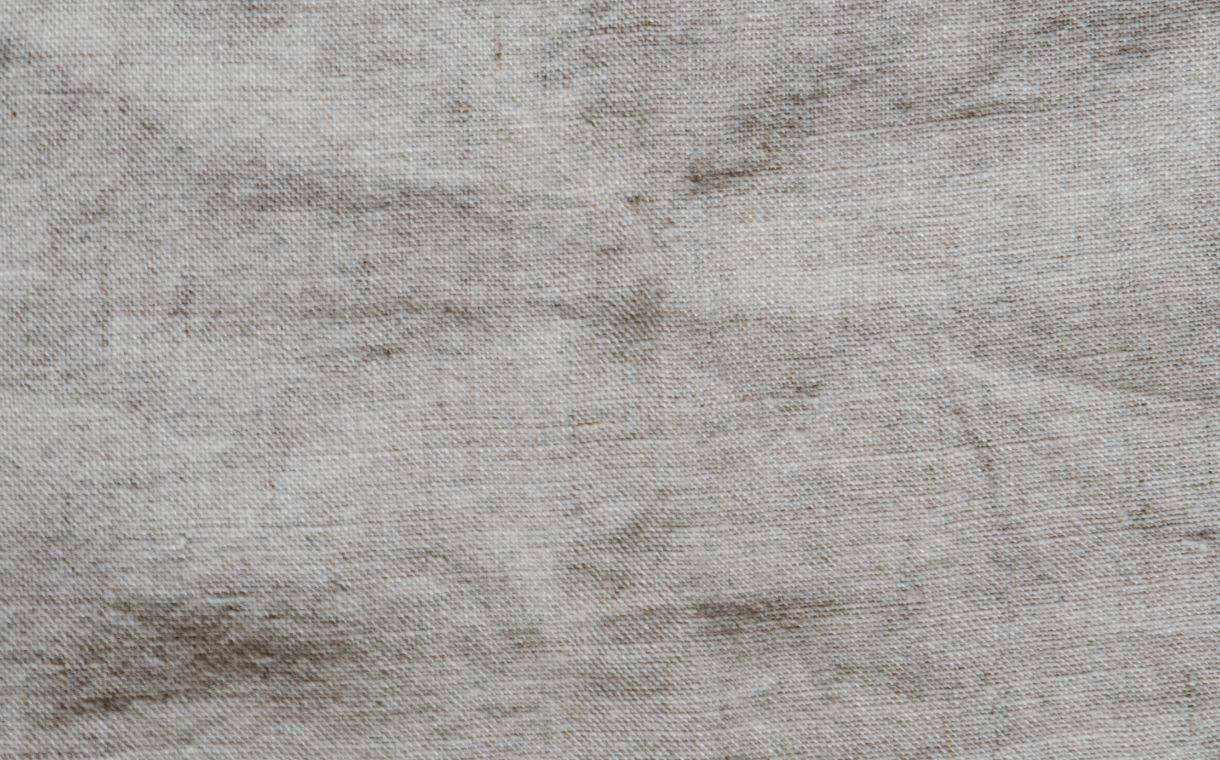
Image by Eva Elijas from Pexels
Silk Bed Sheets
Silk fabrics were first produced in Neolithic China and as weaving techniques improved, the demand for Chinese silk increased exponentially across the dynasties. It was even seen as a valuable commodity where bolts of silk were often used as a form of currency, thus, silk sheets have always been seen as one of the most expensive bed sheets.
As silkworms transform into silk moths, they spin themselves into cocoons. The manufacturers then harvest incredibly soft and smooth fibres from these cocoons in their raw state by boiling them in hot water and finally spinning them into fabrics. This time-consuming and intricate process is reflected in the steep cost of silk fabrics.
While they are known to be extremely smooth, the unethical production process and high cost often urge consumers to switch to eco-friendly alternatives that provide almost the same texture, such as TENCEL™ Lyocell or bamboo.
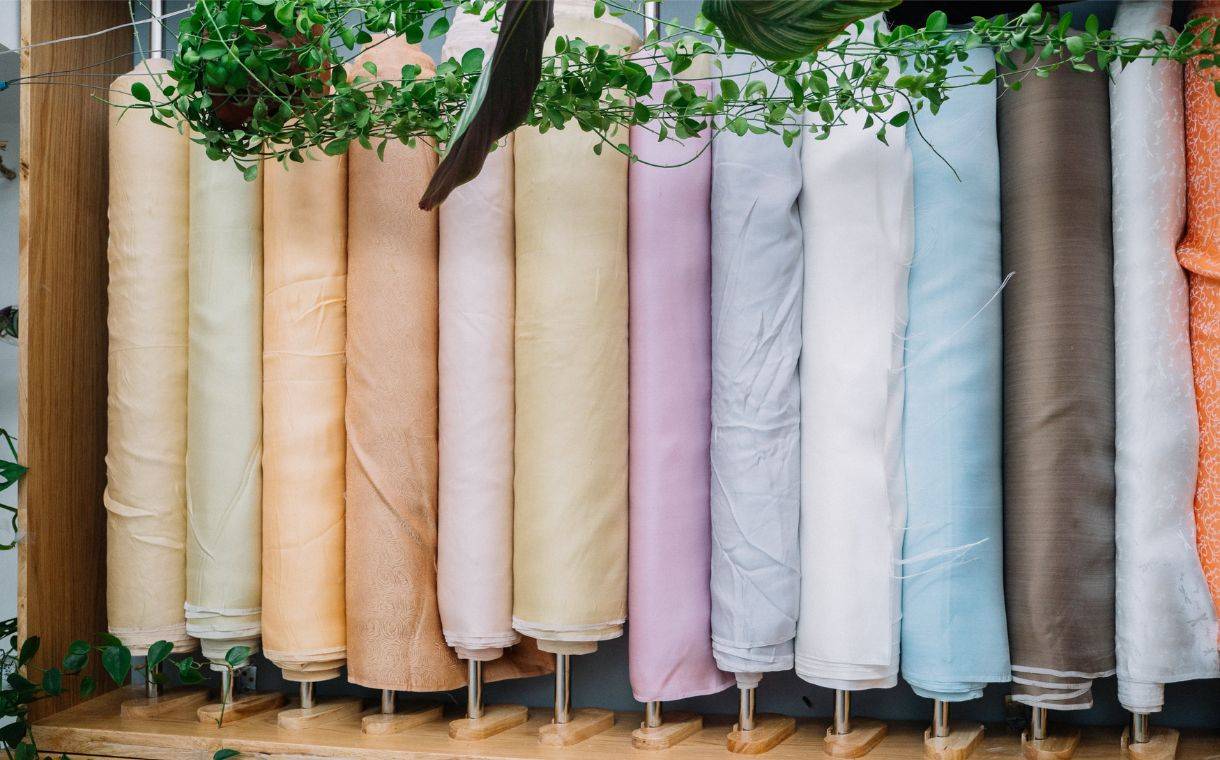
Image by Anna Tarazevich from Pexels
Jersey Bed Sheet
As you can guess, this fabric originates from the island of Jersey, situated between England and France. It can be produced using a knitting machine or by hand to make small, even, close-grained stitches.
Unlike silk or other luxurious bedding materials, jersey sheets makes up for its down-to-earth element with its incredibly comfortable feel that makes going into bed feel like slipping into your favourite cotton t-shirt.
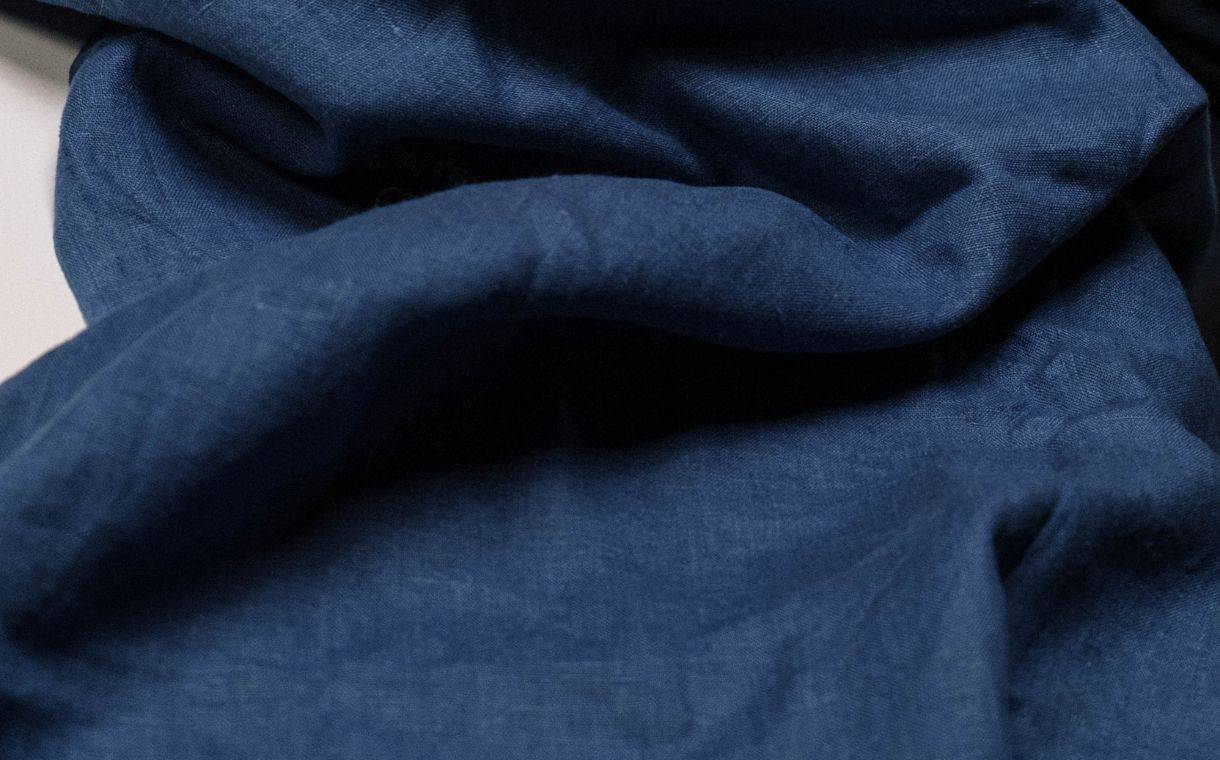
Image by cottonbro from Pexels
Polyester Bed Sheet
Polyester is a synthetic fabric that is commonly found in apparels such as raincoats, swimsuits, and workout attires due to its wrinkle-free and budget-friendly element.
Polyester fibre is created through a chemical reaction involving coal, petroleum by-products, alcohol, and carboxylic acid. These components are then processed through a vacuum at extremely high temperatures to produce long polymer strands. They are stretched while hot to create the extremely durable, wind, and water-resistant material that many people love.
However, the qualities that make a polyester jacket desirable are what makes polyester bedlinen less breathable and moisture-wicking, which could be considerably uncomfortable to sleep in.
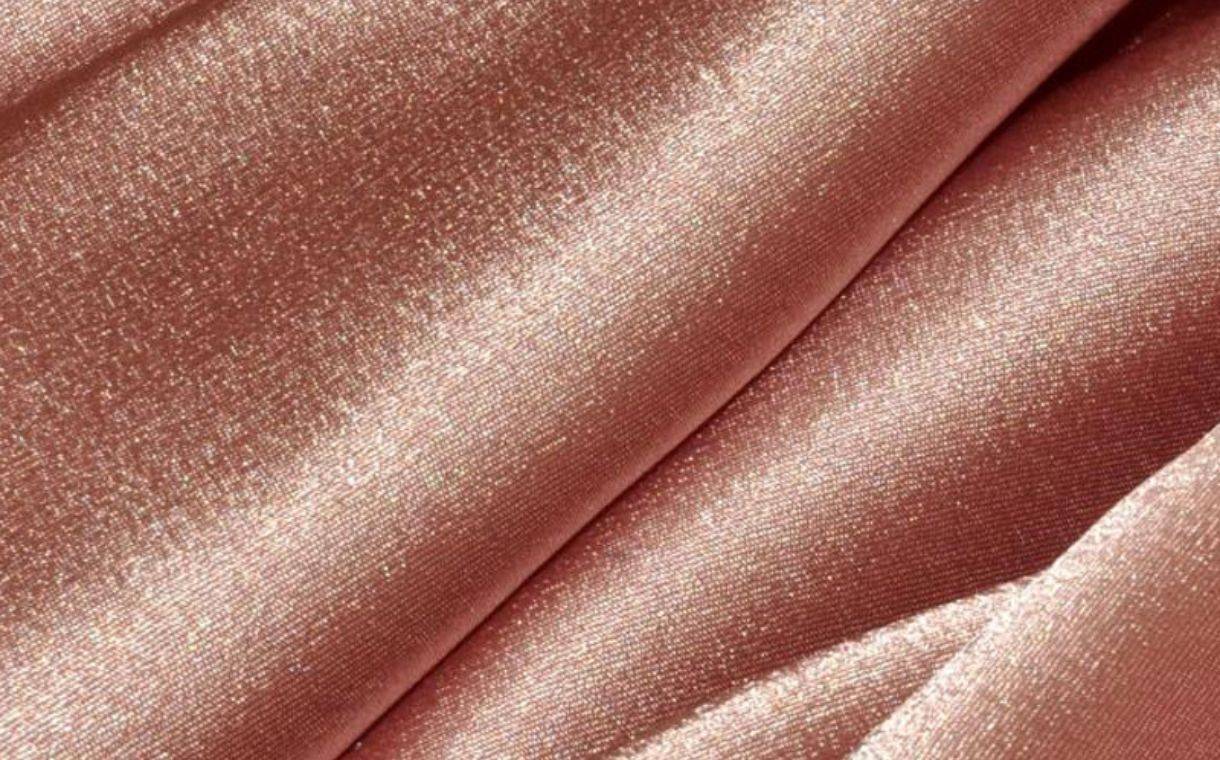
Image by Contrado
Microfibre Bed Sheet
Microfibres are finely woven fibres made from wood pulp, polyester, or nylon polymers. Unlike their polyester counterparts, microfibre sheets are softer and less prone to wrinkling and shrinking as compared to all-natural fabrics such as cotton.
The softness and strength of a microfibre bedlinen depends on the thickness of the strands used during the weaving process, a concept similar to that of cotton sheets thread count.

Image by Jaymantri from Pexels
How to Choose Bed Sheets: Factors Affecting Bed Linen Quality
Not all fabric is the same and its quality can be determined based on overarching factors that affect their texture, appearance, breathability, and more.
Material
As discussed in the previous sections, there are different types of materials that affect the look and feel of your sheets.
|
Material |
How They Feel |
How They Look |
Ideal for |
| TENCEL™ Lyocell |
Luxuriously smooth, incredibly soft, and silky from the first day of use. Ultra breathable and gentle on your skin. |
Smoother and drape or silk-like look. More vibrant as it retains dye better and is less prone to fading over time. |
Hot sleepers, people with sensitive skin, or those prefer sheets with a naturally silky look and are wrinkle-resistant |
|
Cotton |
Smooth and even feel, best known for its increased softness and durability over time, especially for premium quality cotton |
Crisp, matte look for percale cotton and silky feel with a subtle sheen for sateen cotton |
Those who prefer increased softness in their sheets with every wash that is low maintenance. Note, however, that lower quality ones may not offer this feature. |
| Bamboo |
Soft and supple to the touch |
Drape, silk-like look |
Hot sleepers or people with sensitive skin. Consider opting for a more environmentally friendly option such as TENCEL™ Lyocell |
| Linen |
Often feels more crisp initially but becomes soft and supple through time and use |
Rough, textured pattern |
Individuals with sensitive skin or hot sleepers but prefer a crisper feel to their sheets |
| Silk |
Soft and almost waxy feeling |
Pearlescent sheen |
You have sensitive skin, frizzy hair, or simply want to add a luxurious staple piece to your bedroom. Consider opting for sustainable alternatives such as TENCEL™ Lyocell. You can enjoy similar benefits without breaking the bank and damaging the environment |
| Jersey |
Stretchy and soft |
Completely opaque and well-structured |
Those who prefer staying warm and cosy while they sleep, or someone looking for a low maintenance bed sheet |
| Polyester |
Typically coarse, scratchy and rough but this is largely dependent on its manufacturing process |
Lightweight, plastic-like feel, and non-breathable |
Sleepers who opt for comfortable yet budget-friendly options |
| Microfibre |
Smooth, slippery feel similar to silk |
Soft, better heat retention properties than cotton |
Those who want a fully synthetic bed sheet with similar properties to cotton and polyester |
Thread Count
The total number of threads woven into one square inch of cloth (the warp) and horizontally (the weft) is referred to as the thread count. It is generally accepted that higher thread counts result in softer and smoother sheets, although this may not always be true.
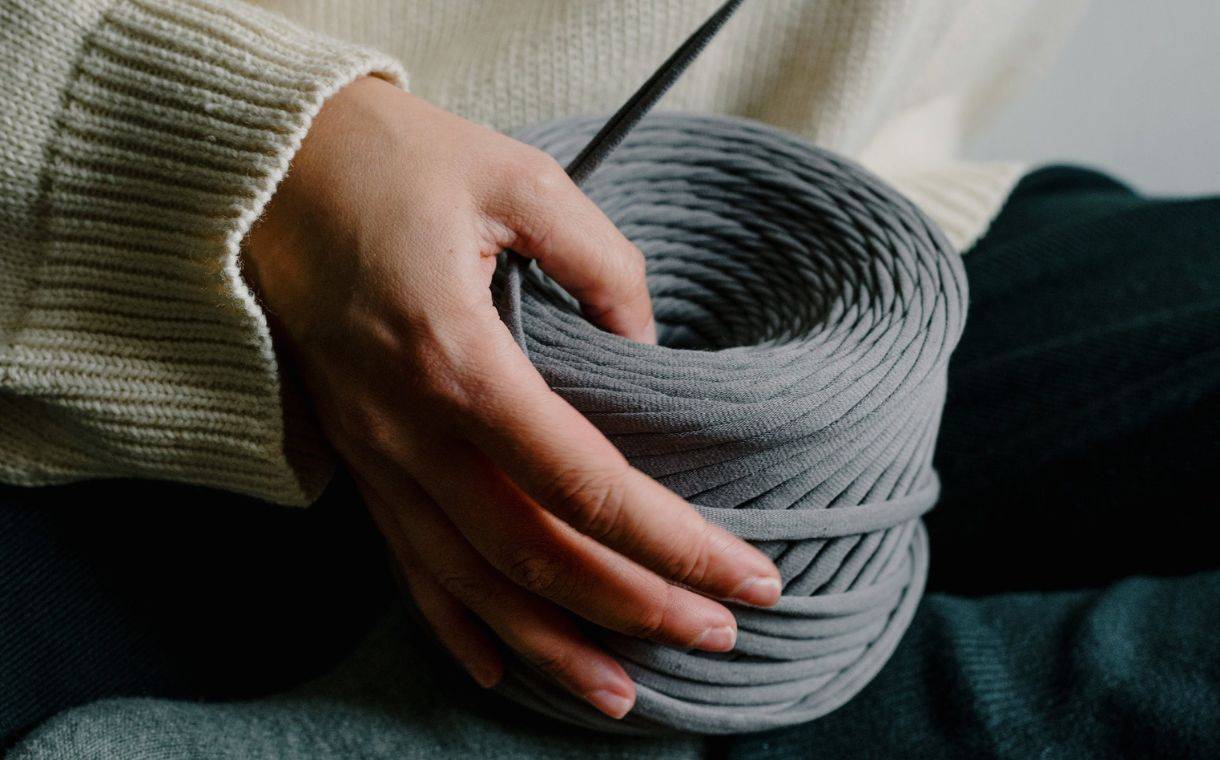
Image by Ksenia Chernaya from Pexels
A thread count of 150 (75 each for the warp and the weft) produces muslin, which feels a little rough, whereas a thread count of 200 will feel finer and perhaps softer. However, this does not mean that you should be rushing to purchase bedding with the highest thread count you can find. As a thread count sheets guide, choose the best thread count ranging from 400 - 600 made with quality cotton fibres. These numbers are enough to make soft and luxurious cotton sheets. Note that the ideal range may vary depending on the type of material.
Though important, thread count should not be the sole indicator when looking for quality sheets. Manufacturers and marketers may occasionally use deceptive computations to manipulate their figures as a promotional tool since bedsheet thread count has a significant impact on consumers' decisions.
To demystify this conspiracy, Consumer Reports hired an independent textile lab to count threads in a queen sheet set with the stated thread count of 1200. However, results showed that there were only 416 threads per inch, 35% of what was initially claimed.
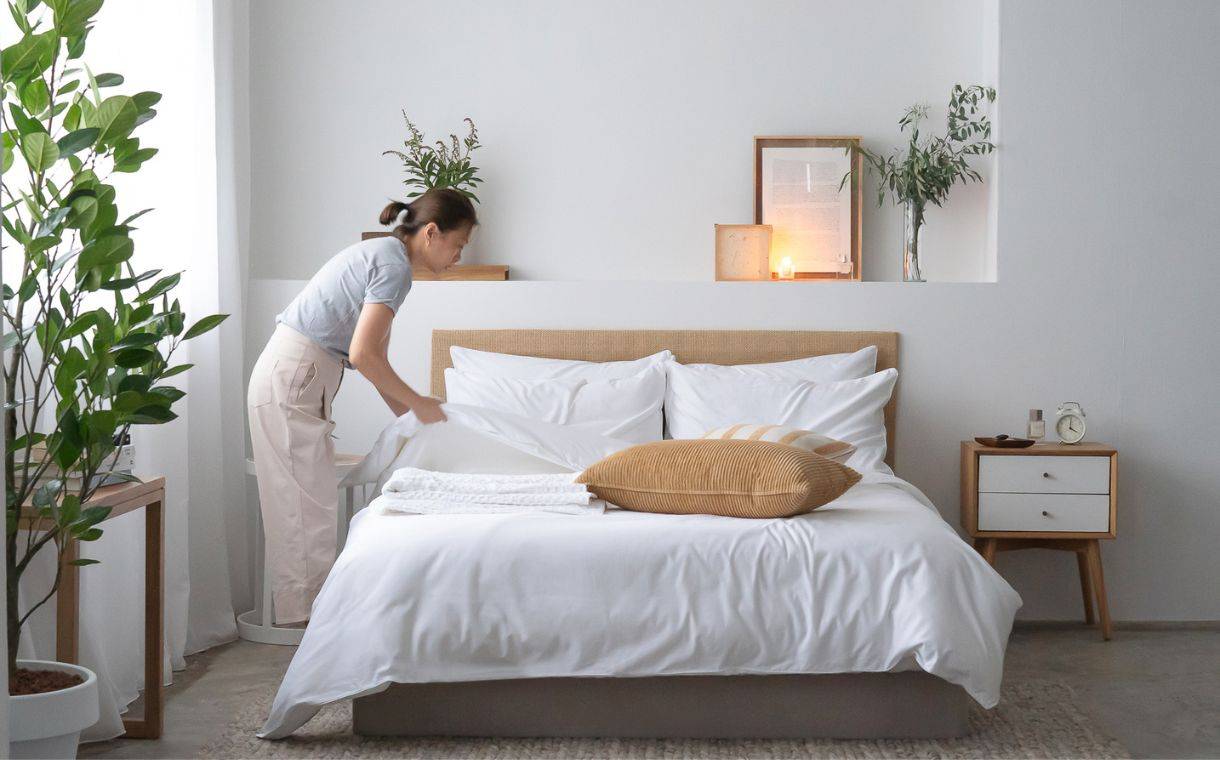
Featuring Weavve's Cotton Classic Set in Cloud White
Ply
Think of ply as braiding hair, threads are taken and spun together to make one thick yarn of fabric. Single-ply fabrics are made with a single thread, double-ply fabrics with two threads twisted together and so on and so forth.
Just as how the weave of fibres greatly affects the end product, the number of ply has an effect on the overall feel of bed sheets as well. Multi-ply or double-ply strands are commonly composed of short-staple cotton threads, which are weaker and less expensive. In an effort to enhance their strength and durability, these threads are twisted together before being woven. Ideally, premium sheets should have 400-600 thread count with single-ply strands.
Yarn Count
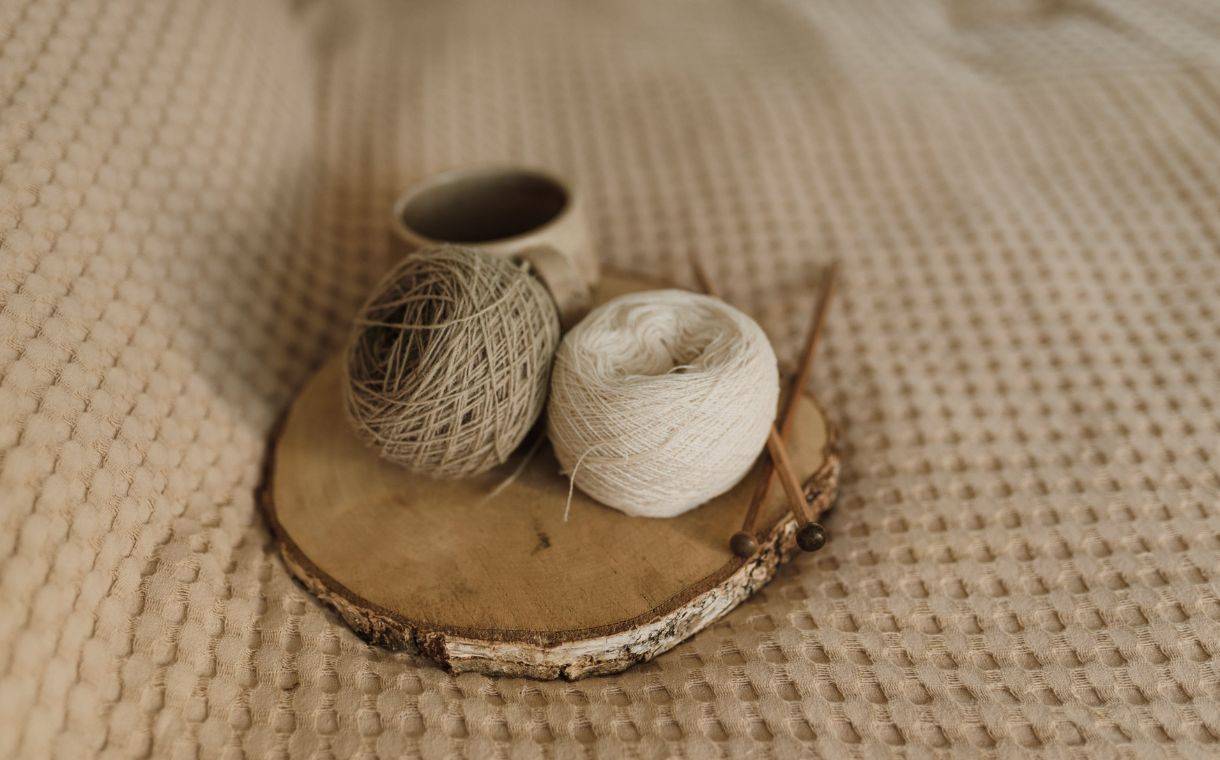
Image by Arina Krasnikova from Pexels
Another metric closely intertwined with thread count, yarn count, is a metric to define a material’s fineness or coarseness of a yarn. Fibres with longer diameters take up more space and will hence have a smaller yarn count. This could result in a more durable fabric with a ‘rougher’ finish. Whereas smaller fibres will need more threads to fill the same square inch, and hence have a higher yarn count (around 80s to 100s) to produce a smoother, more beautiful sheet.
Another factor that can affect yarn count is how loosely or tightly the yarn is woven. When fine fibers are tightly woven together, the yarn count will be boosted and vice versa. Tighter weaves with quality yarn are usually the most desirable as it can produce a fabric that has peak functional and aesthetic attributes.
A simple rule of thumb when understanding yarn count would be:
Higher Yarn Count = Finer thread diameter and/or more tightly woven yarn
Lower Yarn Count = Wider thread diameter and/or more loosely woven yarn
Staple Length
In the world of cotton, the length of the fibre may be a more reliable indicator of quality. Staple length, also known as the length of the fibres, is one of the most important factors in determining the softness of fabrics. It is most commonly associated with cotton fabric. For example, extra-long staple cotton makes sheets and fabrics that are finer, smoother, and lighter.
|
Types of Cotton Staple |
Extra-Long Staple Cotton |
Long Staple Cotton |
Short Staple Cotton |
|
Short Description |
1 ⅜ inches to 2 inches long Finest quality |
At least 1 ¼ inches long High quality |
1 ⅛ inches long Lowest quality |
|
Properties |
Luxuriously soft and smooth, strong and most durable |
Softer, stronger, and more durable |
Rougher, strong, and durable |
|
Examples |
Gossypium Barbadense (Egyptian Cotton, Pima Cotton, and Supima Cotton) Egyptian cotton is usually on the pricier side out of the range of cotton fabrics. |
Gossypium Hirsutum (Upland Cotton) Most commonly used cotton, especially in making denim jeans, flannels, and more. It is an American classic, comprising 95% of cotton grown in the US. When a label reads “100% cotton”, chances are, it is made with American Upload. |
Gossypium Arboreum (Muslin), Gossypium Herbaceum (Levant Cotton) Both comprise less than 2% of global cotton production. Apart from apparels, Muslin is also used as gauze in the medical field while Levant Cotton has been used for a wide range of medicinal purposes such as the treatment of nausea, headaches, and fevers. |
It is important to ensure that the type of cotton that the fabric claims to be from is verified or certified.
For example, cotton that is grown in Egypt, both long and short staple, can be technically labelled as Egyptian cotton, which makes it hard to guarantee the quality of the ‘Egyptian cotton bed sheets’ that you’re buying. And there are a lot of fabrics claiming to be Pima cotton that are actually just a blend of Pima. Hence, look out for a verified Pima cotton or Supima instead.
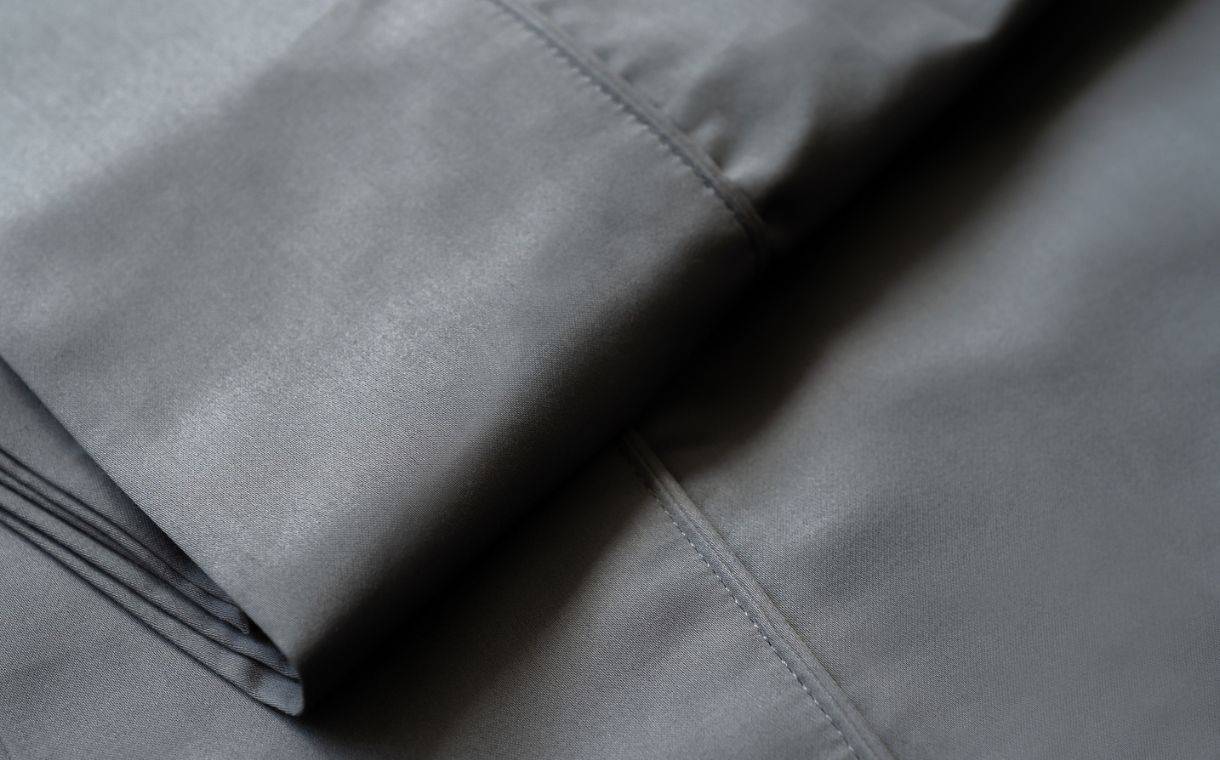
Featuring Weavve's Classic Cotton Set in Persian Grey
Weave Type
The weave of a fabric is considered a design or construction of the yarn to achieve a particular pattern, which determines its texture and durability. Three of the most popular types are sateen, percale, and twill, which we'll compare below:
|
Types of Cotton Weaves |
Percale |
Sateen |
Twill |
|
Short Description |
Percale has a basic one thread over, one thread under pattern. |
Woven using a four over and one under weave pattern, leaving more continuous thread surfaces exposed. Sateen weave also makes the fabric feel luxurious and smooth, similar to silk. |
Twill has diagonal ribbing, just like denim. |
|
Properties |
Lightweight, crisp against the skin Percale sheets are prone to wrinkling in the wash and may need ironing to maintain their crispness, which may not be as easy to care for as other sheets. |
Luxurious sheen and smooth feel and gets softer with each wash. Sateen sheets may sometimes be prone to wrinkling during the wash, but generally more resistant to wrinkling than percale. |
Relatively rougher texture. |
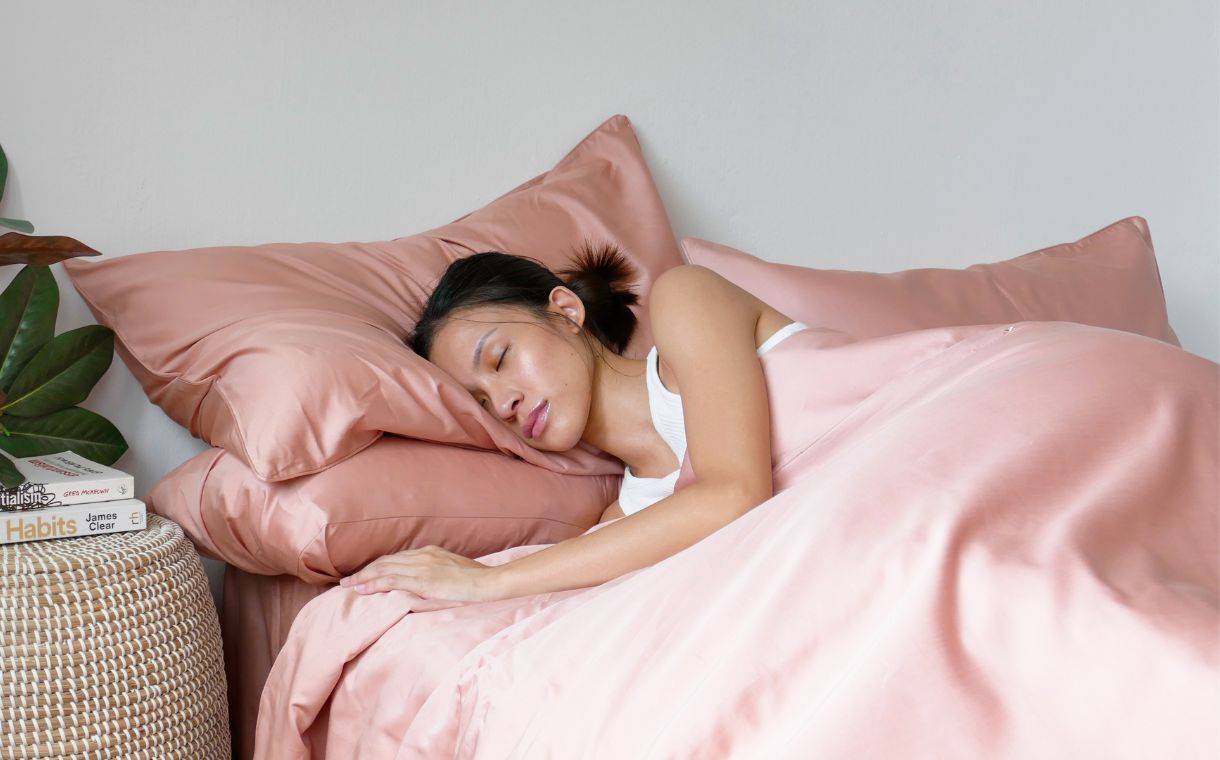
Featuring Weavve's Classic Cotton Set in Tea Rose
How Long Do Bedlinen Sets Last?
Bed linen may experience natural wear and tear, including fading, pilling, thinning of fabric, or slight fraying at the edges. This is a normal part of usage over time.
On average, well-maintained bed linen can last anywhere from two (2) to 10 years or more. But remember that sheets are crafted from a variety of materials, each with their own level of durability. Thus, the lifespan can vary depending on several factors, such as the fabric quality, frequency of use, bedding care and maintenance, etc.
If you lead a busy life that doesn’t leave you much time for laundry or tidying up, it may be advisable to buy bed sheets that are long-lasting plus easy to clean and care for.
Weavve Recommends: Our TENCEL™ Lyocell sheets and cotton sheets are machine washable, using a gentle wash and spin cycle. They are ideal for those who prefer low-maintenance yet durable bedding.
Finding Toxin-Free and Safe Bedsheets
Promoting a healthy sleep environment entails choosing non-toxic products. The good news is, it’s now easy to spot bedding safe for your family and loved ones with the help of the following certifications.
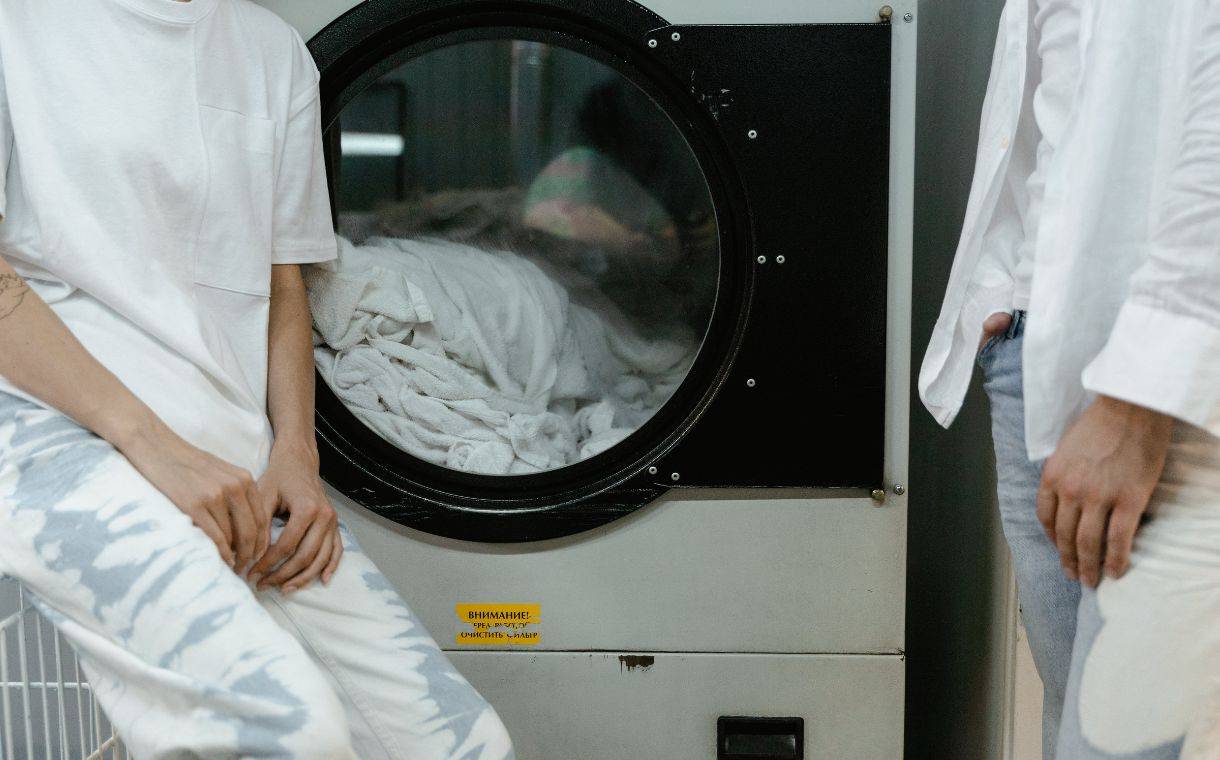
Image by Tima Miroshnichenko from Pexels
Oeko-Tex® Standard 100
Oeko-Tex® Standard 100 is a test done by Oeko-Tex® where every component of the product, from thread to the finished product, is tested for regulated and non-regulated substances which may be harmful to human health. When a product is Oeko-Tex® Standard 100 Certified, it means that the product is free of harmful levels of over 100 individual substances from 17 groups of chemicals.
The already extensive Oeko-Tex® criteria log is updated at least once a year and expanded with new scientific knowledge or statutory requirements. So rest assured that any product you purchase with this certification will be safe for you and your loved ones, including kids and pregnant moms!
Sedex
Sedex is one of the world’s leading ethical trade membership organisations, working with businesses to improve working conditions in global supply chains. They enable responsible sourcing through collaboration and information gathering and sharing - making the supply chain as transparent as possible.
They also aim to drive social change to help organisations align with the United Nations Guiding Principles, meet the Ethical Trading Initiative Base Code and conventions of the International Labour Organisation.
Global Organic Textile Standard (GOTS)
In order to be certified, GOTS requires at least 95% of the material in a product to be certified organic. This standard also prohibits the outright use of certain substances, including in the 5% of potentially non-organic certified materials, such as chemical flame retardants and harmful azo dyes.
GOTS certification covers the entire textile process from manufacturing to trading, including fair labour practices such as safe working conditions, fair wages, and no child labour.
How to Choose Bed Sheets: Must-Know Tips
With a wide variety of options available in the market, selecting the right bedding can be a daunting task. However, understanding a few key considerations and these tips can make the process much simpler. Now, let’s find you the perfect sheets that offer both comfort and style, shall we?
Pick the Right Bed Sheet Size
There is a multitude of bed and mattress sizes across different countries, such as Singapore, Australia, Europe, and the United States. Here is a quick summary of their differences.
| SG | AU | EU | US |
| Single: 91 cm x 190 cm |
Australian Single: 90 cm x 191 cm |
Euro Single: 90 cm x 200 cm |
Twin: 99 cm x 188 cm |
| Super Single: 107 cm x 190 cm |
Australian Double: 137 cm x 191 cm |
Euro Double: 137 cm x 191 cm |
Twin XL: 99 cm x 203 cm |
| Queen: 152 cm x 190 cm |
Australian Queen: 153 cm x 203 cm |
Euro Queen: 140 cm x 200 cm |
US Queen: 152 cm x 203 cm |
| King: 183 cm x 190 cm |
Australian King: 180 cm x 203 cm |
Euro King: 180 cm x 200 cm |
US King: 193 cm x 203 cm |
| King Long: 183 cm x 200 cm |
California King: 183 cm x 213 cm |
||
| Australian Super King: 200 cm x 200 cm |
This means that if you want to purchase a Queen size bed sheet in Singapore, you may also purchase an Australian Queen, Euro Queen, or US King.
In order to ensure you have an accurate measurement of your mattress, remember to remove all sheets from your bed before using a measuring tape to measure its width, length, and height.
The chart below should help you determine which bed sheet size you should pair with each classic mattress size. Weavve's sheets are aligned with Australian sizes with deep pockets so they are slightly bigger than Singapore standard sizes and can accommodate larger beds.
| Bed Size |
Fitted Sheets (W x L x D) |
Flat Sheets (W x L) |
Duvet Cover (W x L) |
| Single: 91 cm x 190 cm |
Single: 92 cm x 192 cm x 40 cm |
N/A | Single: 140 cm x 210 cm |
| Super Single: 107 cm x 190 cm |
Super Single: 107 cm x 200 cm x 40 cm |
N/A | Super Single: 180 cm x 210 cm |
| Queen: 152 cm x 190 cm |
Queen: 152 cm x 200 cm x 40 cm |
245 cm x 270 cm | Queen: 210 cm x 210 cm |
| King: 183 cm x 190 cm |
King: 183 cm x 200 cm x 40 cm |
275 cm x 275 cm | King: 250 cm x 210 cm |
| Super King: 200 cm x 200 cm |
Super King: 201 cm x 201 cm x 40 cm |
275 cm x 275 cm | Super King: 260 cm x 230 cm |
| California King: 183 cm x 213 cm |
California King: 183 cm x 213 cm x 43 cm |
275 cm x 275 cm | California King: 270 cm x 240 cm |
As a rule of thumb, you should pick a fitted sheet size proportionate to the mattress size. For example, King bed sheets will perfectly fit a King mattress size.
Opt for a Bedsheet Colour That Fits Your Bedroom Theme & Personality
Bed sheet colours are an easy yet impactful way of giving a bedroom personality as the bed is the focal point of the bedroom. They can instantly change up the mood and also encourage better moments of rest.
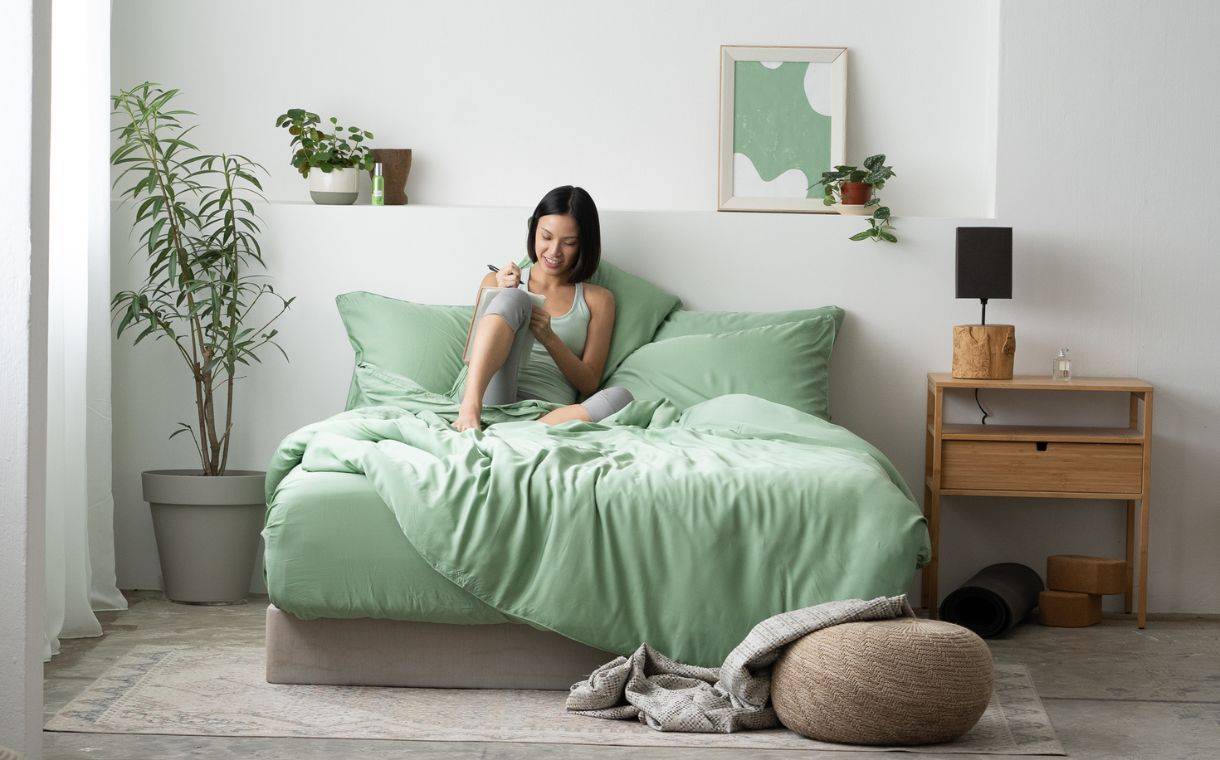
Featuring Weavve's Signature TENCEL™ Fitted Sheet Set In Fern Green
If you are one for bright colours and livening up your room, pink, purple, and sky blue bed sheets may be just the shade for you. Or if you’re looking for earth tones to make your bedroom feel a little homier and bring in a touch of nature, green and light brown never fail to impress. White bed sheets are the classic that go with any room. They can make you feel brighter, airier, and fresher.
However, if you are someone who’s practical and worries about your bedding looking dirty, darker colours like dark blue or grey-coloured sheets would make a better choice. When selecting bed sheet colours, four things to consider are your personal style, overall home design or colour scheme, sleeping style, and if you are one for mix-and-match or prints.
Find Sheets Fitted to the Climate
If you are someone who is prone to sweating in your sleep and struggles to find bedsheets to keep you cool throughout the night, or someone living in a warm climate, looking for materials that are moisture-wicking and temperature-regulating would do wonders.
For example, Singapore's warm and humid weather demands bed sheets that excel in moisture management, allowing for adequate airflow and evaporation to keep you cool and dry throughout the night.
Weavve Recommends: TENCEL™ bed sheets feature outstanding thermoregulating and breathability qualities, which have been shown to make them feel cooler to the touch. In fact, this "cooling effect" gets stronger as the air humidity rises, which is ideal for Singapore's climate! In comparison to cotton, they are 10 times less likely to draw dust mites and limit the spread of germs.
On the other hand, in colder areas of the world, it's important to select bed sheets that offer warmth and insulation. Fabrics like flannel, fleece, and brushed microfibre are great choices as they provide a cosy and snug feel, trapping body heat and keeping you comfortable throughout the night.
Consider Your Personal Preferences
You should take into consideration your own taste and whether they are a good fit for you and your sleeping habits. The most expensive and luxurious bed sheets may not be the best option for you if they do not work for your lifestyle. Here is our humble attempt at categorising your personal preferences:
- Sensitive Skin. Believe it or not, one of the biggest triggers of acne is the type of sheets you are sleeping on, especially spending approximately eight (8) hours a night lying in your sheets. As you sleep, your body expels heat which activates your sweat glands. This encourages the production of more sebum which leads to acne breakouts or itching on the skin. Eczema, psoriasis, rosacea are also common skin conditions. Hypoallergenic and gentle bed sheet materials that are smooth and breathable will greatly help in reducing skin irritation and sensitivity.

Featuring Weavve's Signature TENCEL™ Deluxe Set In Cloud White
- Design & Finish. Bed sheets not only protect your bedding but also beautify the room. Consider whether you like a luxurious finish effortlessly with a silk-like drape or a look that is more crisp and subdued.
- Eco-Friendly Option. The sustainability of the fabric is also a growing trend and an important factor when searching for the perfect sheets. Some questions to ask and consider include the ethical and environmental practices of the manufacturers, certifications, and the source of the fibres.
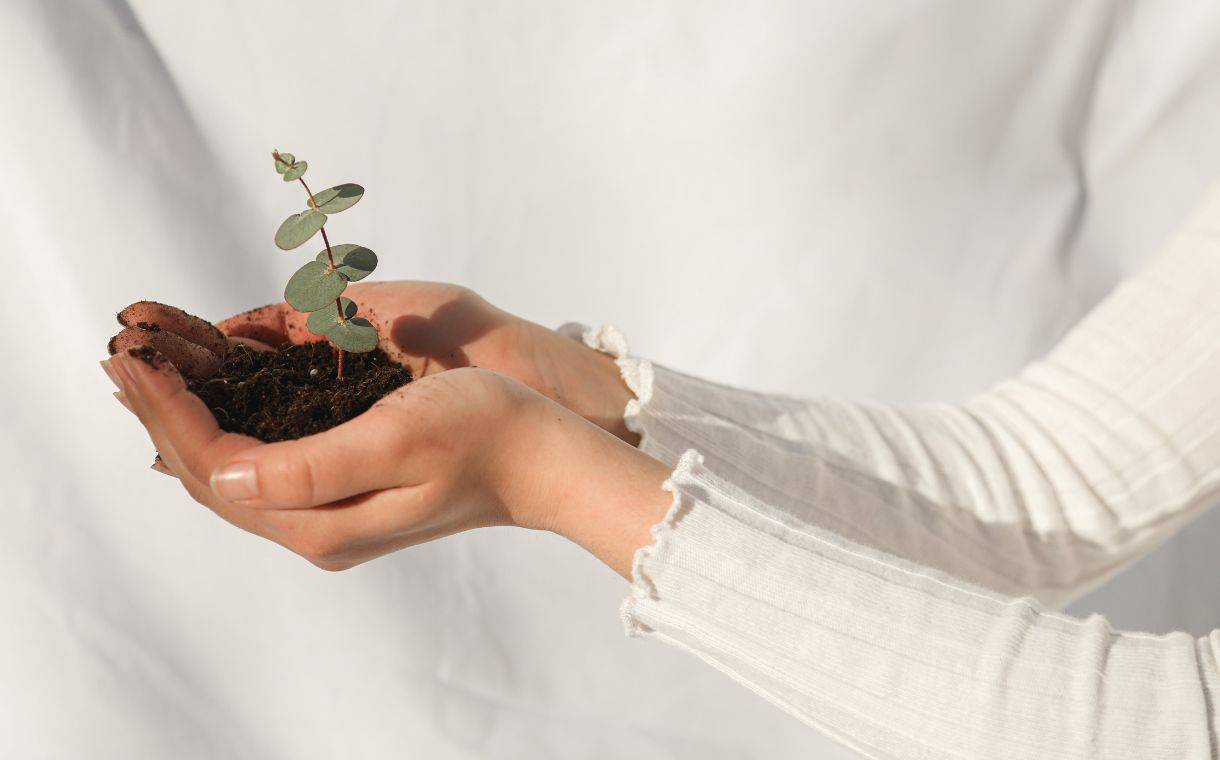
Image by Cup of Couple from Pexels
- Affordability. If silk, bamboo, or TENCEL™ sheets are out of the budget, quality cotton bed sheets make a good option for luxurious comfort. They, too, have a soft touch to the skin and do the job of keeping you cosy at night without having to empty your wallet.
Bed Linen Shopping: Price Range Comparison
With a wide variety of types and blends, there is surely something for everyone at different price points. Here’s a table to help you find the one tailored to your budget.
Note, however, that actual prices can vary based on bed linen brands and quality, so be sure to do your research and check all your options before coming to a decision.
|
Material |
Cost Comparison |
Fitted Sheets Price Range In Singapore |
|
TENCEL™ Lyocell |
Generally more expensive than cotton due to high-priced yet sustainable production. But since you can save on care and maintenance due to its durability, the overall cost difference is hard to measure. |
Above 80 SGD |
| Cotton | Different price points available, from more budget-friendly to luxury options depending on the type of cotton. |
Above 50 SGD and less than 30 SGD for lower end brands |
| Bamboo | Often compared with TENCEL™ but in terms of TENCEL™ vs bamboo price points, the latter is slightly lower. |
Above 50 SGD |
| Linen | More costly than cotton due to the extensive production. |
Above 80 SGD |
| Silk | TENCEL™ and silk sheets are comparable in price. |
Above 200 SGD |
| Jersey | Tend to be inexpensive but the blend of jersey determines its price point |
Above 40 SGD |
| Polyester | Typically cheaper than cotton |
10 SGD - 50 SGD Generally less than 50 SGD |
| Microfibre | Wide range of price points but they are still cheaper on average than cotton as microfibre is synthetic. |
10 SGD - 40 SGD Commonly within 10-20 SGD range |
Where to Buy Bed Linen Online in Singapore
If you're looking to buy bed sheets online, there are several reputable platforms and stores where you can find a multitude of options to suit your preferences. You can shop on online marketplaces or you may visit online sites of bedding retail stores in Singapore.
Trusted brands like Weavve Home offer different types of bed linen for you to choose from. Whether you love the silky smoothness of TENCEL™ sheets or the buttery soft feel of cotton sheets, you are off to a great night’s sleep. You may even avail of free delivery for orders above $50.
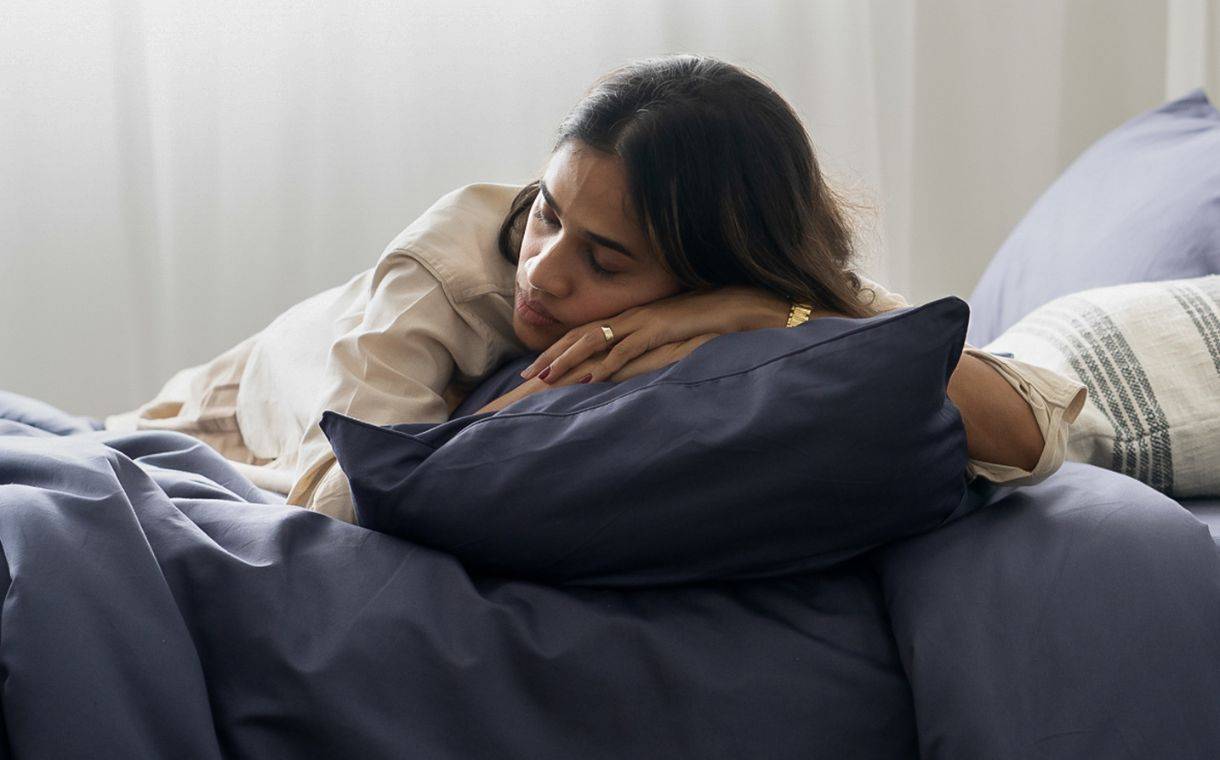
Featuring Weavve’s Cotton Deluxe Set in Midnight Blue
Frequently Asked Questions: Bed Sheets
How to choose the best bed sheets for me?
It depends on your needs and budget. When picking good quality sheets, do you research and make sure to look into the factors mentioned such as the type of material used, fabric quality, colour, personal preferences, care requirements, and certification. You should also compare price points and weigh how much you're willing to spend to achieve great sleep.
What is the best material for hot sleepers?
Both TENCEL™, cotton, bamboo, and silk are all good options for hot sleepers as they are cooling bed sheets. However, TENCEL™ fibre bed sheet is the best choice for hot sleepers because of its great moisture-wicking properties. It allows for better thermoregulation especially in high humidity such as Singapore’s weather condition.
What is the difference between TENCEL™ and cotton?
Cotton and TENCEL™ each have distinct fibres, which can change how a fabric feels. Both are renowned for being soft, breathable, and durable. But in terms of differences, TENCEL™ is more eco-friendly while cotton is more affordable. TENCEL™ Lyocell is also superior when it comes to moisture-wicking and durability.
What are the healthiest sheets to sleep on?
Bedsheet sets made of 100% natural and organic fibres are often considered the best choices. These include cotton or linen, and many others. The key is to opt for hypoallergenic, breathable, and moisture-wicking materials, allowing adequate airflow to your skin.
If you could also find products that are sustainably sourced from pure natural fibres, such as TENCEL™ and bamboo, that offer the same texture and quality, we recommend going for them.
How often should I change my bedding sets?
Should you size up when buying sheets?
It is generally recommended to match your bedding size with the mattress size. For instance, a Single-sized mattress should have Single bed sheets. Sizing up may lead to ill-fitting or loose sheets that may shift during sleep.
When in doubt, refer to our bedsheet size chart.
How many bed linen do I need?
We advise having at least two to three sets of bed linen per bed or person in your home. This allows for rotation and ensures you have a spare set while one is being washed. However, the exact number may still boil down to your personal preference, practicality, and laundry routine.
Which linen is used in hotels?
Hotels often use high-quality bed linen sourced from long-lasting and luxuriously comfortable materials. While specific choices may vary, cotton is a common material used in hotel bed linen. Egyptian cotton and pure cotton sheets with high thread count are especially popular choices because of their softness and durability.
What are some tips for purchasing bed linen sets?
When finding the perfect bed sheet for you, consider the size that matches your mattress, the material that suits your comfort preferences (such as cotton, linen, or bamboo), weave type that provides the desired texture (like percale or sateen), and many others. Additionally, factor in the climate and season to choose breathable fabrics for warm weather and warmer fabrics for colder temperatures.








































